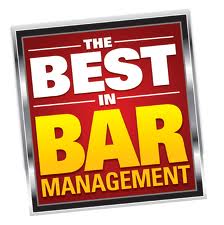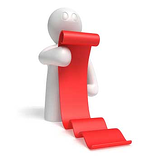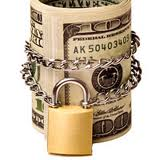 Vodka/Tom Collins
Vodka/Tom Collins
Anything can be a Collins, but “Vodka” and “Tom” (using Gin) are the two called for the most. Make this drink directly in the Collins glass. Fill it with ice. Put in one shot of vodka/gin. Add sweet and sour mix to 3/4 of the glass. Shake. Add club soda to the top and garnish with a cherry/orange ( ag). Many bartenders do not shake a Collins, nor do they put in the club soda. There are no laws that say you have to do either, but traditional mixology should prevail for this kind of classic drink. The original recipe calls for club soda, and you must always shake any drink that contains sweet and sour mix.
Bloody Mary
The Collins glass is the traditional favorite for this fading but still popular bar drink, always in the top 10 in popularity. Make the drink directly in the glass if you’re making them one at a time, step by step. First, a shot of Vodka, then fill the glass with tomato juice. Then put in a dash of salt, pepper, Worcestershire sauce and Tabasco. Add a lime wheel for the garnish. Customer preference could dictate adding anyone, or all, of the following additional ingredients: celery salt, cocktail onions, A-1 sauce, cubes of cheese, beef bouillon, pepperoni, horseradish, shrimp, Angostura bitters, pepper rings, celery stalk, onion rings, lime wheel, pepperoncini, etc.
When a customer appears to be “picky” about how spicy he wants the drink, give him the tabasco sauce “on the side.” Let him put in his own. In my opinion, don’t waste your time making a Bloody Mary from scratch using tomato juice and all the condiments.
It takes too much time and you don’t know your customer ’s personal taste preferences. Instead, go with a Bloody Mary pre-mix. Or, make your own house pre-mix. Here are a couple of batch recipes for one gallon of premade Bloody Mary mix:
Two 46 oz. cans of tomato juice
1 3/4 oz Worcestershire sauce
1 3/4 oz. A-1 sauce
1 oz. celery salt
1 oz. celery salt
1/2 - 1 oz. tabasco sauce
2 oz. lime juice
6 oz. beef bouillon
1/2 - 1 oz. tabasco sauce
6-8 dashes of pepper
Stir thoroughly
Horseradish or Angostura bitters could be added to the above ingredients. Or use a can of Picante Sauce in place of the same amount of tomato juice. Consider putting a kosher salt rim around the glass, like the original Bloody Mary. For a garnish, consider a couple of medium, boiled shrimp along with the lime wheel.
Maybe a couple pieces of pepperoni, Swiss cheese, green pepper, a spicy asparagus stick, a beef jerky and a cocktail onion or two. How imaginative do you want to get?
Whatever variations you decide, make sure all the bartenders make the drink the same way, using the same pre-mix and garnishes. If pre-mixing Bloody Mary mix by the gallon is not pro table for you because you don’t sell enough of them, here are
some interesting options:
(1) Sacramento makes a Bloody Mary mix in a six-ounce can. It’s excellent and there is no waste because of the six-ounce can portion. Refrigeration is not required. The can sits on the shelf until it’s used.
(2) Use Spicy Hot V-8 juice, also available in six-ounce cans. This makes an outstanding Bloody Mary mix. Don’t let the customer see you putting V-8 in his drink. Add it underneath the bar. Many a bartender will tell you that the most compliments received for Bloody Mary mix was not from tomato juice, but from Spicy Hot V-8 juice. If you store opened Bloody Mary mix overnight, make sure it is checked and tasted before opening the next day. Bloody Marys are popular at lunch-time. Make sure the mix is good before you get somebody sick! If the mix tastes “marginal,” throw it out! This is why the six ounce cans of tomato juice are cost effective and convenient—no spoilage!
Three very good Bloody Mary Mixes I recommend are Whiskey Willy’s, Zing Zang and Kelly and Gonzalez. Purchase through your local distributor.

 ned & Daiquiri
ned & Daiquiri 
 e-mail
e-mail



